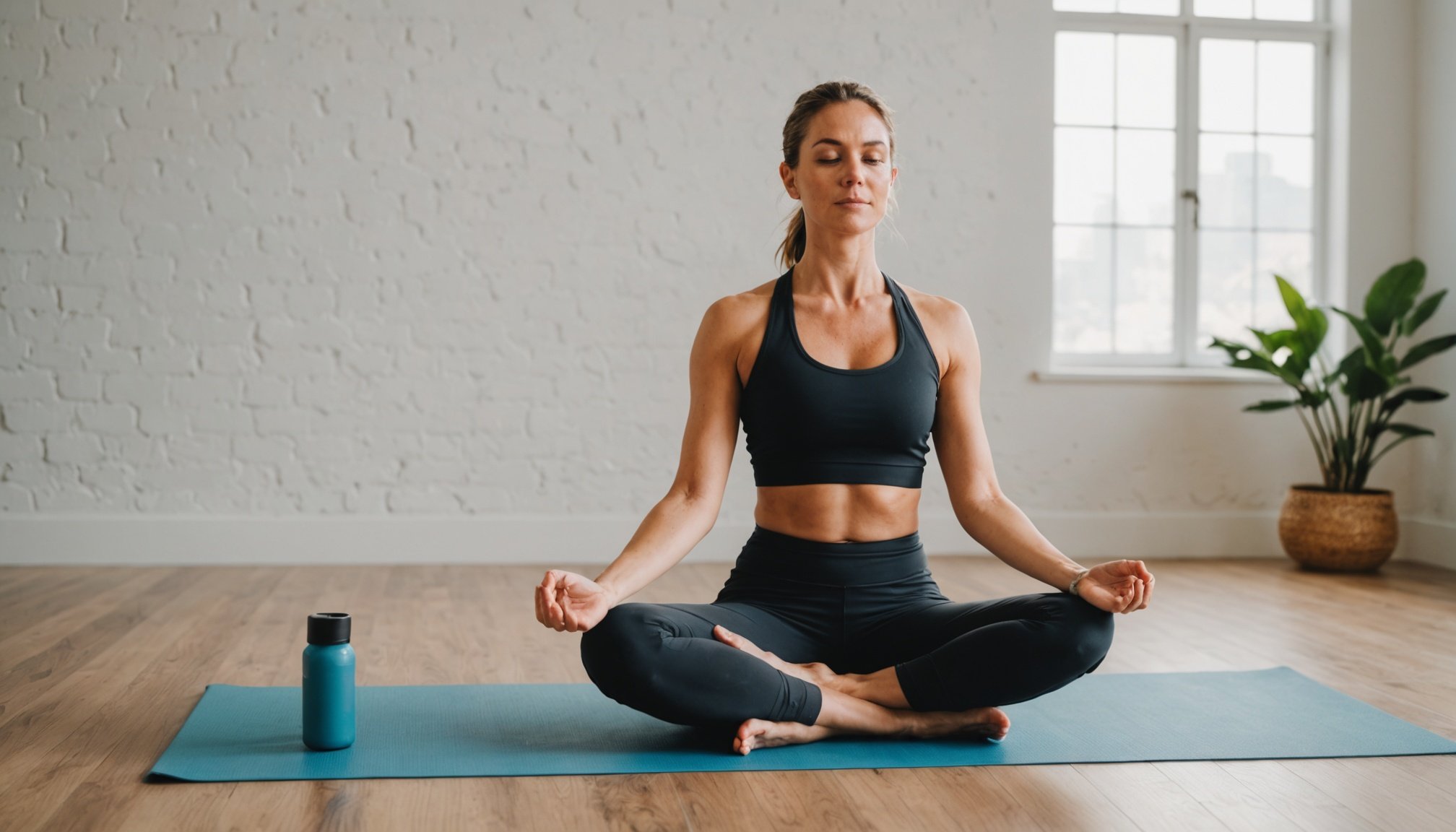Understanding Stress and Its Impact on Daily Life
Stress is an unavoidable part of modern life, impacting both our mental health and our physical well-being. Common stress triggers can include work pressures, financial issues, and personal relationships. These factors can lead to persistent tension and anxiety, manifesting in various ways.
Physical effects of stress can range from headaches and muscle tension to more serious concerns such as hypertension. Moreover, chronic stress might compromise the immune system, making individuals more susceptible to illnesses.
Also to discover : Unlock the Secrets of Perfect Eyebrow Shaping: Find the Best Brow Style to Elevate Your Facial Charm
On the mental health front, stress can exacerbate issues such as depression and anxiety, leading to detrimental impacts on daily living. It is crucial for individuals to recognise and address stress, as leaving it unchecked could intensify its effects.
Managing stress effectively is vital for maintaining a balanced lifestyle. Techniques such as mindfulness, yoga, and stress relief practices can play a significant role in alleviating tension. By implementing these practices consistently, individuals can nurture their mental health, reduce the effects of stress, and improve overall well-being, thus leading to a more harmonious daily life.
Also read : Unlock the Perfect Eye Cream: Customized Solutions for Your Unique Skin Care Needs
Benefits of Yoga for Stress Relief
Yoga offers numerous benefits in reducing stress, particularly through its focus on the mind-body connection. One of the primary ways it aids in stress reduction is by lowering the levels of stress hormones in the body, helping individuals feel more relaxed and centred. This reduction ensues from the deliberate practice of mindfulness, a key element of yoga. By concentrating on the present moment and becoming aware of physical sensations without judgement, practitioners can alleviate anxiety and stress.
The physical benefits of yoga are also significant when considering stress relief. Regular yoga practice leads to increased flexibility, improved balance, and enhanced strength, all contributing to a healthier, anxiety-free body. Specific poses target muscle tension often associated with stress, providing a physical release that enhances well-being.
Meditation and deep breathing practices inherent in yoga further bolster its health benefits. These aspects encourage a state of mental calm, leading to reduced cortisol levels. As a result, the harmonious interplay between physical postures and mindful breathing in yoga can markedly improve both mental and physical wellness.
Creating Your Personalized Yoga Routine
Designing a yoga practice tailored to your needs involves assessing your stress levels and preferences. Begin by understanding your stress levels. Reflect on situations that increase anxiety or tension. Identify symptoms such as irritability or fatigue, providing insight into your personal stress profile.
Assessing Your Stress Levels
Recognizing stress triggers allows for a customized yoga approach. If work pressure is a factor, soothing sessions focusing on relaxation might be beneficial. Use mindfulness to evaluate mental and physical responses throughout the day, modifying your practice accordingly.
Identifying Your Preferences
Discover yoga styles that resonate with you, whether it’s gentle flows or vigorous vinyasa. Preferences in pace and intensity help shape an engaging practice. Explore different techniques and postures, ensuring a personalized yoga routine that encourages regular participation.
Designing a Flexible Schedule
Creating a routine that adapts to your lifestyle is crucial. Establish realistic goals, whether dedicating time in the morning or unwinding after a long day. Flexibility in scheduling ensures sustainability, allowing your personalized yoga routine to become a consistent, stress-relieving habit.
Essential Yoga Poses for Stress Relief
Incorporating specific yoga poses into your routine can provide significant stress relief, enhancing both physical and mental well-being. Here are some therapeutic yoga poses known for their calming benefits:
-
Child’s Pose: This restorative pose, known as Balasana, gently stretches the back while promoting relaxation. It helps to release tension in the shoulders, neck, and back, encouraging deep breathing and a sense of peace.
-
Forward Bend: Uttanasana, or Forward Bend, aids in the relief of stress by calming the mind and invigorating the nervous system. Its gentle inversion allows for a soothing effect, making it excellent for reducing anxiety.
Incorporating restorative poses like these, and practicing them mindfully, enhances their effectiveness. Focus on the breath while moving slowly into each position, allowing your body to relax fully into the stretch. By mindfully performing these poses, you engage the mind-body connection, which is integral in promoting stress relief.
To maximize benefits, integrate these poses into a regular practice, interspersed with breathing exercises, to create a holistic approach to managing and alleviating stress.
Breathing Techniques to Enhance Your Practice
Incorporating breathing techniques into your yoga practice significantly enhances stress management and overall well-being. These techniques, known as Pranayama, form a crucial connection between mind and body, facilitating deeper relaxation and focus.
Basic Breathing Exercises
Begin with basic exercises like deep breathing to improve stress handling. Sit comfortably, inhale slowly through the nose, hold gently, then exhale through the mouth. Repeat to instill calmness and balanced energy flow. This practice activates the relaxation response, lowering stress hormones in the body.
Incorporating Breath with Movement
Syncing breath with movement is key in yoga. As you flow through poses, coordinating inhalations and exhalations fosters a deeper mind-body connection. For instance, inhale when transitioning to upright poses, and exhale while bending forward. This rhythm amplifies your capacity to stay present and stress-free.
Benefits of Deep Breathing
Deep breathing reduces anxiety, lowers blood pressure, and boosts mental clarity. By focusing on Pranayama, you support both your mental health and physical equilibrium. Developing these habits greatly aids in managing everyday stress, ensuring a stable, serene approach to life’s challenges.
Creating a Calming Environment for Yoga
Creating a calming space for your yoga practice is essential for stress relief and mental relaxation. A well-planned environment enhances the practice’s benefits, allowing you to focus fully on stress reduction and mindfulness.
Key Elements for a Soothing Yoga Space
To cultivate a serene yoga environment, start by choosing a quiet area free from disruptions. Lighting plays a vital role; natural light, if possible, or soft, warm-toned lighting, can create a peaceful atmosphere conducive to relaxation. Consider incorporating soothing background sound, like gentle music or nature sounds, to further enhance tranquility.
Personalizing Your Environment
Personalization is crucial. Integrate items that promote peace, such as candles or essential oils, to engage the senses and foster a calming ambiance. A clutter-free, carefully curated space helps to maintain focus and facilitates meditation.
Importance of Environment for Stress Relief
A well-crafted stress relief space is not just about the physical elements. It’s an intention to cultivate mindfulness and encourage a practice where mental clarity and stress management are paramount. A supportive environment translates directly to a more effective yoga session, fostering the mind-body connection integral to stress relief.
Mindfulness Practices to Complement Your Yoga Routine
Mindfulness can significantly enhance the effects of stress relief offered by yoga. Incorporating these practices helps foster a deeper mind-body connection, crucial for mental clarity and overall mental health.
Guided Meditation Techniques
Guided meditation involves following an instructor’s narration to focus the mind. Meditation encourages present-moment awareness, alleviating stress by diverting attention from worries. Regular practice can improve emotional regulation and fortify mental resilience against stressors.
Visualizations for Stress Relief
Visualizations are powerful tools for stress relief, utilising guided imagery to elicit a calming response. By picturing serene scenes or peaceful scenarios, individuals can reduce anxiety, lower stress hormone levels, and improve overall mood. This technique supports relaxation by engaging the mind’s natural imagery capability.
Integrating Mindfulness into Daily Life
Mindfulness integration into daily activities can elevate routine tasks to moments of calm. Practicing mindfulness while eating, walking, or even during chores focuses your awareness on the present, reducing stress. By consistently applying mindfulness, you nurture a lifestyle less impacted by external pressures, thereby enhancing both mental health and holistic stress management.
Additional Resources and Expert Insights
Exploring yoga resources provides valuable guidance for enhancing your practice and boosting stress relief. Access to curated online classes, which range in style from gentle flow to invigorating sessions, offers flexibility and convenience. These resources are perfect for those seeking structured sessions, complete with expert advice on mind-body connection and stress reduction techniques.
Several expert testimonials highlight the transformative power of yoga in achieving a balanced lifestyle. Professionals often emphasize the importance of personalized routines that align with individual stress levels and preferences. This customization can significantly amplify the benefits of yoga, ensuring it targets specific stressors effectively.
Community support is also pivotal in maintaining a sustainable yoga practice. Engaging with local groups or online forums provides a sense of belonging and shared learning. These spaces offer insights into new techniques, fostering a supportive environment that encourages regular practice.
Ultimately, utilizing a range of trusted resources and expert insights not only enriches your yoga journey but also strengthens the tools needed for comprehensive stress management.











